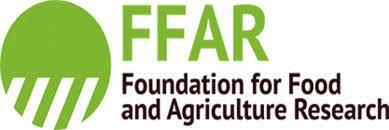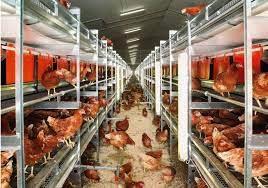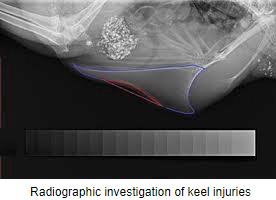 The Foundation for Food and Agriculture Research (FFAR) and Open Philanthropy, together with other supporters are funding the Layer Hen Keel Bone Health Program. The objective is to establish causes of sternal (keel bone) damage in pullets and laying hens and to implement corrective action. Currently the relative contributions of genetics, nutrition and housing or their interaction have not been defined. Nikki Dutta, Director of Scientific Programs with FFAR, stated, “Improving the welfare of animals is a critical component of animal husbandry and keel bone damage is a serious threat to the wellbeing of layer hens.”
The Foundation for Food and Agriculture Research (FFAR) and Open Philanthropy, together with other supporters are funding the Layer Hen Keel Bone Health Program. The objective is to establish causes of sternal (keel bone) damage in pullets and laying hens and to implement corrective action. Currently the relative contributions of genetics, nutrition and housing or their interaction have not been defined. Nikki Dutta, Director of Scientific Programs with FFAR, stated, “Improving the welfare of animals is a critical component of animal husbandry and keel bone damage is a serious threat to the wellbeing of layer hens.”
 The program will award grants totaling $3 million to be shared by scientists at the University of Edinburgh and the University of California, Davis. Matching funds to support research will bring the total to $7 million.
The program will award grants totaling $3 million to be shared by scientists at the University of Edinburgh and the University of California, Davis. Matching funds to support research will bring the total to $7 million.
Professor Ian Dunn of the University of Edinburgh, stated, “The project seeks to enable genetic selection directly for the keel bone itself as well as novel nutritional approaches and the influence of the timing of when hens start to lay on their bone quality.”
The research team is using x-ray images and machine learning to refine when and how keel damage occurs in relation to management especially at onset of production, and to investigate nutrition and genetic predisposition.
It is evident that keel damage has become a significant problem following the transition from cage rearing and laying to the use of aviary and floor systems.
Until results are available from research that has been initiated, producers can apply observation and experience to reducing injury to the sternum.. Appropriate measures include: -

- Ensuring that pullets are reared in aviary systems that are compatible with their eventual housing during the laying cycle.
- Selecting strains that are placid under aviary conditions.
- Ensuring that light levels do not lead to excitation and excessive movement across aisles.
- Habituating flocks to the movement of workers along aisles.
- Providing adequate nutrition with specific reference to calcium phosphorus and micro-mineral content in both rearing and laying phases of production.
- Applying appropriate stocking density and management practices that contribute to flock uniformity.
- Selecting a biological rather than chronological age to initiate onset of laying by photo- stimulation.
- Ensuring that rearing and laying aviaries have adequate and functional perches, ramps and landing areas.
- Limiting the height of rearing and laying aviaries to two tiers and reducing the width of aisles to a level consistent with the ability of pullets and hens to successfully move between rows of aviary modules.